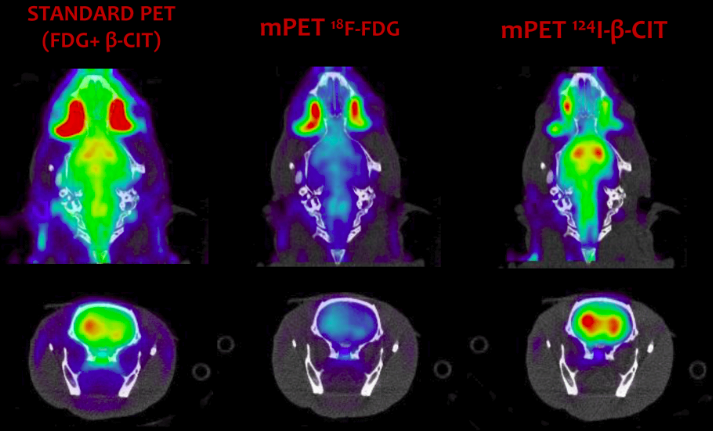A New Approach for Multiplexed PET Imaging

| AUTHORS | |
| JOURNAL | IEEE Nuclear Science Symposium & Medical Imaging Conference, 2014 |
| ABSTRACT | Simultaneous noninvasive evaluation of biological processes can improve molecular imaging by providing complementary tissue functions under equivalent conditions coregistered in space and time. Positron Emission Tomography (PET) is the most sensitive noninvasive molecular imaging tool, able to measure many physiological properties with a number of radiotracers. Unfortunately, positron annihilation gamma rays are identical for all radiotracers, making them indistinguishable with standard PET imaging. This fact has motivated attempts at dual tracer imaging with standard PET to distinguish radiotracers using timebased differences. Simultaneous PET measurement of two nuclides has been proposed using nonstandard radionuclides emitting high energy prompt gammas in coincidence with the beta+ decay, but this method is not applicable for radionuclides of medical interest with prompt gammas in the 511 keV range, e.g., 124 I, 76 Br, and 61 Cu. We present a system (mPET) to acquire, reconstruct and separate PET data into images of each radionuclide’s activity concentration, and demonstrate it with simultaneous measurement of 18 F and other additional radionuclides. Two Argus preclinical PET/CT scanners adapted for simultaneous acquisition of double and triple coincidences were used to measure phantoms containing 18 F and 76 Br, 86 Y, or 94m Tc. Double and triplecoincidence datasets, as well as estimated random datasets, were reconstructed using a 3D OSEM GPU implementation. An additional iterative algorithm was implemented to generate separated images of radionuclide activity concentration, constrained by the measured datasets. Our results collectively show the feasibility of the technique, including the case of radionuclides with prompt gammas in the photopeak window. These methods hold the potential for improving molecular imaging by enabling simultaneous PET imaging of multiple radiotracers. |
| LINK | Link |



